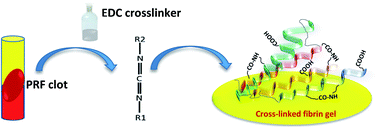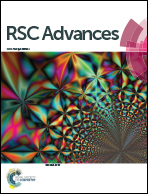Platelet-rich fibrin (PRF) gel modified by a carbodiimide crosslinker for tissue regeneration
Abstract
Platelet-rich fibrin (PRF) as a rich source of effective growth factors has been used as a scaffold in tissue regeneration. It is known that PRF exhibits rapid degradability against enzymes, which should be decreased using crosslinking agents to reduce the release rate of growth factors and increase the effectiveness of tissue regeneration. In this study, a carbodiimide crosslinker with different concentrations (0.01%, 0.05%, 1%, and 2%) was used to modify and improve the properties of PRF gel. The crosslinked gels were evaluated with analyses such as SEM, swelling, degradability, mechanical strength, release test, cytotoxicity, and cell adhesion. The results showed that with increasing crosslinker concentration, the morphology of the fiber structure changes drastically, the swelling rate decreases from 300% (control) to 160% for the crosslinked gel, the degradation time for the control sample increases from 8 days to more than two weeks for the crosslinked gel, and the Young's modulus increases from 0.15 MPa (control) to 0.61 MPa for the crosslinked samples. Growth factors also showed lower release with increasing crosslinking ratio. Cytotoxicity assays demonstrated that by increasing the crosslinker concentration to 1% w/v, no cytotoxicity was observed. Cellular studies with DAPI staining showed that the cells penetrated well into the gels and were well distributed, especially in gels with lower crosslinker concentrations. In addition, the modified PRF gel can be used as a scaffold for tissue regeneration.



 Please wait while we load your content...
Please wait while we load your content...